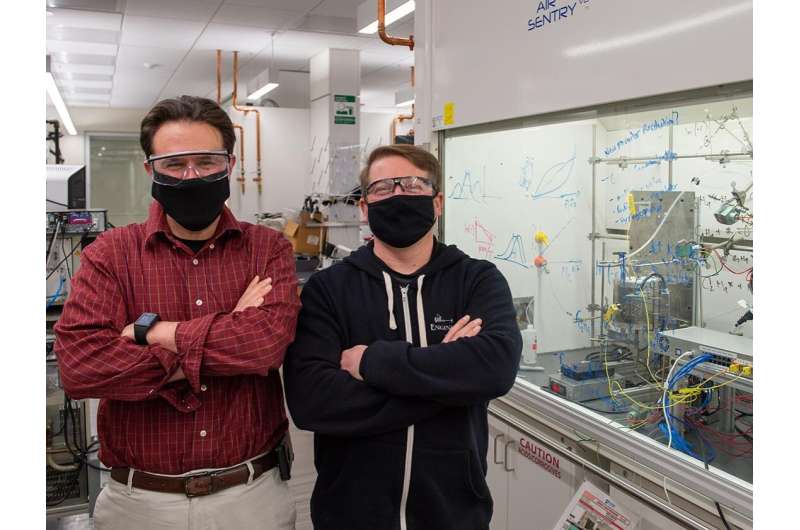Tuning exact ratios of two metals in a catalyst may enable new directions in catalysis science

In the last 20 years, there have been efforts to reduce fossil fuel use in plastics manufacturing, and, according to Penn State researchers, efficient, customizable catalytic reactions—where two metals are combined using a catalyst, or molecule that remains unchanged during a reaction—are an attractive alternative.
Researchers have found a way to make catalytic reactions less wasteful and more cost effective by controlling the placement of each atom on the catalyst surface. Controlling or customizing the catalysts cuts down on unneeded competitive reactions and isolates a successful, predictable reaction. These results were published in Nature Chemistry.
"By isolating an active metal in an inert host, and precisely controlling the exact ratio of the metals, we can get a targeted pattern of the two metal atoms," said Michael Janik, Penn State professor of chemical engineering and co-principal investigator for the study.
Researchers used palladium, which served as the active catalyst component, and zinc, the inert host, to form an intermetallic, a compound with two or more types of metal atoms arranged in a repeating pattern.
The researchers, led by Janik and co-principal investigator Robert Rioux, the Penn State Friedrich G. Helfferich Professor of Chemical Engineering, tested different amounts of zinc and palladium and found that different ratios of zinc-to-palladium had widely different catalytic reactivity.
The researchers tuned the ratio of palladium to zinc to form surfaces that contained only isolated palladium monomers and trimers, or clusters of three adjacent atoms. They demonstrated that both palladium monomers and trimers could hydrogenate —or add hydrogen gas to—acetylene, and thus create ethylene, a gas needed to process plastics.
But in the process, palladium trimers also catalyzed an ethylene hydrogenation reaction, an undesired consequence, which ruled out using trimers. Isolated palladium monomers surrounded by zinc atoms, however, were an effective configuration for selectively hydrogenating acetylene.
Because of their work on this paper, Janik, Rioux and their collaborators received a $1.2 million grant in 2019 from the U.S. Department of Energy with the goal to extend the science into new applications.
"We will use computational modeling and machine learning to predict designs of other intermetallics that will arrange certain numbers of metal atoms in unique configurations," Janik said. "We are now trying to find other combinations of two metals that allow us to control the arrangement of the two metal atoms."
Janik, Rioux and collaborators at Penn State and Carnegie Mellon University are now using data science approaches to discover other intermetallic catalysts with precise and tunable reaction sites. Working with Zachary Ulissi, associate professor of chemical engineering at CMU, they coded a publicly available web application, known as Nuclearity Zoo, which calculates the arrangement and shape of any combination of active and inactive metals and lists all the potential atomic arrangements of them. The app uses graph theory approaches to categorize active site shapes and sizes.
"For example, there are 237 ways palladium can be combined with zinc to get a pair of palladium atoms that are isolated," Janik said, referring to the web app's results when inputting the two metals. "Then you can download the structure of the atoms for each of the arrangements."
The research group is now using the app and data science approaches to computationally predict active and selective catalysts for a number of industrially important reactions.
More information: Anish Dasgupta et al, Atomic control of active-site ensembles in ordered alloys to enhance hydrogenation selectivity, Nature Chemistry (2022). DOI: 10.1038/s41557-021-00855-3
Journal information: Nature Chemistry
Provided by Pennsylvania State University





















